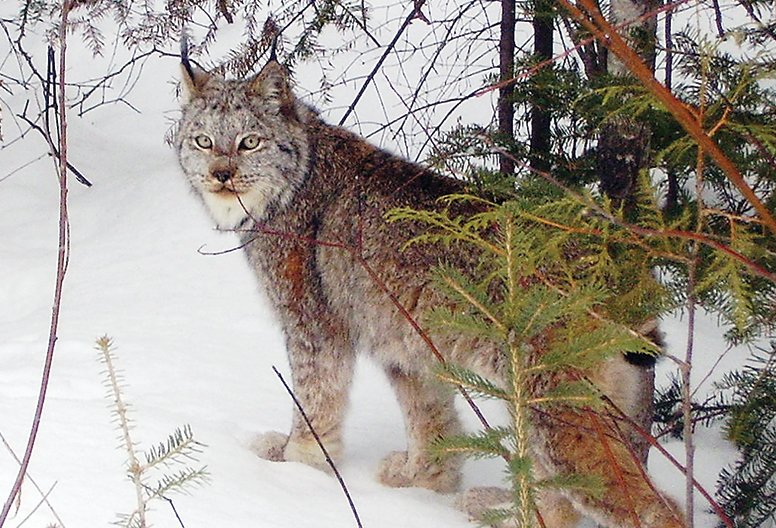Support the Timberjay by making a donation.
Consent decree to restrict trapping in lynx zone
REGIONAL— A federal judge has agreed to a proposed consent decree between the Minnesota Department of Natural Resources and the Center for Biological Diversity (CBD) that will adopt new …
This item is available in full to subscribers.
Attention subscribers
To continue reading, you will need to either log in to your subscriber account, or purchase a new subscription.
If you are a current print subscriber, you can set up a free website account and connect your subscription to it by clicking here.
If you are a digital subscriber with an active, online-only subscription then you already have an account here. Just reset your password if you've not yet logged in to your account on this new site.
Otherwise, click here to view your options for subscribing.
Please log in to continue |
Consent decree to restrict trapping in lynx zone
REGIONAL— A federal judge has agreed to a proposed consent decree between the Minnesota Department of Natural Resources and the Center for Biological Diversity (CBD) that will adopt new regulations designed to limit the incidental taking of Canada lynx.
The Center for Biological Diversity had sued the DNR in 2020 arguing that it had failed to prevent the accidental trapping and killing of lynx by trappers in northeastern Minnesota. A federal court had previously ordered the DNR to seek an incidental takings permit from the federal Fish and Wildlife Service, but the federal agency never acted on the DNR’s permit request nor has the federal agency drafted new regulations to prevent the killing of lynx, which are occasionally captured in traps set for other species, like bobcat, which are legally trapped in Minnesota.
“In the past decade, state and federal agencies have documented numerous captures and deaths of lynx in traps set for other wildlife in Minnesota,” stated Collette Adkins, with the CBD. “Trapping of Canada lynx, unless covered by a specific permit from the U.S. Fish and Wildlife Service, constitutes an illegal ‘take’ under the Endangered Species Act, even if it’s accidental.” The CBD had provided documentation to the court of about a dozen lynx deaths in recent years from accidental trapping.
The judge, Eric Tostrud, agreed, and his order will require trappers in the state’s Lynx Management Zone to include loop stops on strangulation snares, which would limit the amount of pressure these snares could apply to the necks of lynx, potentially reducing mortality. The Lynx Management Zone includes virtually all of northeastern Minnesota located east of Hwy. 53.
In addition, the agreement calls for restricting the use of leghold traps with a jaw spread larger than 6.5 inches. The court order also requires Minnesota officials to take steps to educate trappers about the new reforms.
Three trapping organizations, the Minnesota Trappers Association, the National Trappers Association, and Fur Takers of America, had intervened in opposition to the consent decree and their views were heard by the court at a hearing held Nov. 3, 2022. The trappers had argued against the decree on mostly technical grounds, and suggested that the new rules adopted in the decree would likely be ineffective in reducing lynx deaths.
The CBD disagrees. “This is a big win for Minnesota’s Canada lynx and all of us who care about them,” said Adkins, CBD’s Minneapolis-based carnivore conservation director. “These commonsense reforms of Minnesota’s trapping program will prevent needless, agonizing deaths of these rare cats, as well as other unintended victims, like dogs.”
Canada lynx (Lynx canadensis) are distinguished from bobcats by their tufted ears, hind legs that appear longer than front legs, and a pronounced goatee under the chin. Their large paws work like snowshoes and enable them to walk on top of deep, soft snows. These cold-loving cats feed predominantly on snowshoe hares but may also eat birds and small mammals and scavenge carcasses.
The lynx was listed as a threatened species under the federal Endangered Species Act in 2000. Its federally designated critical habitat includes northeastern Minnesota.






